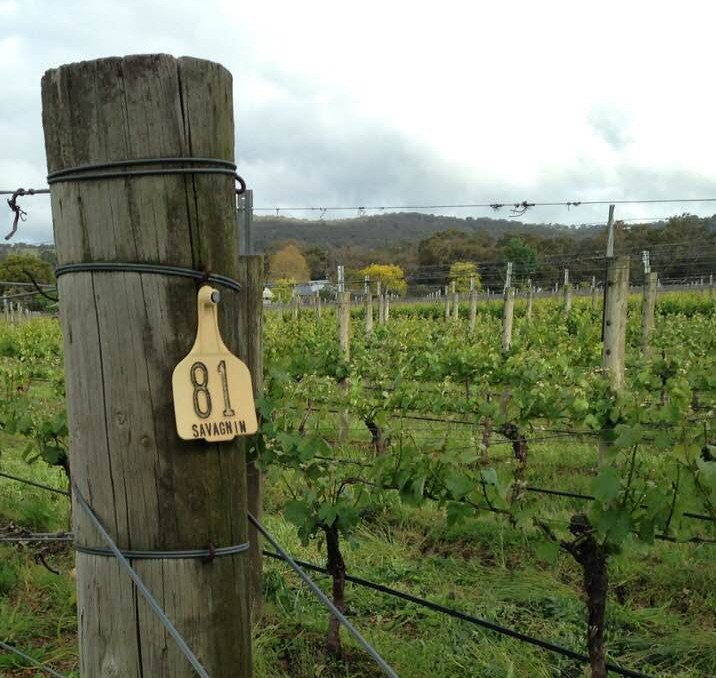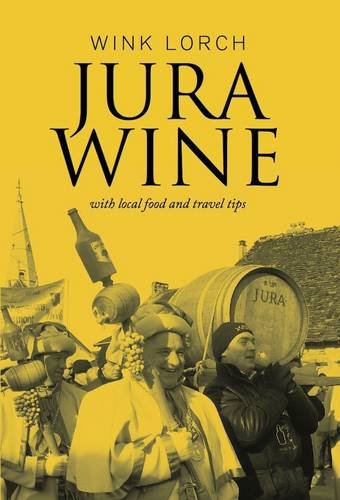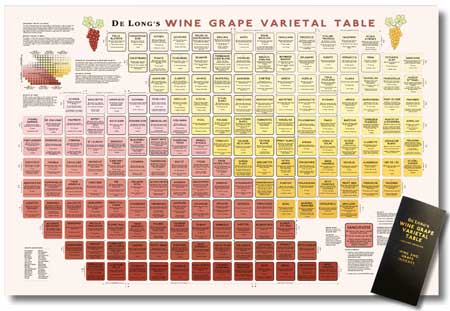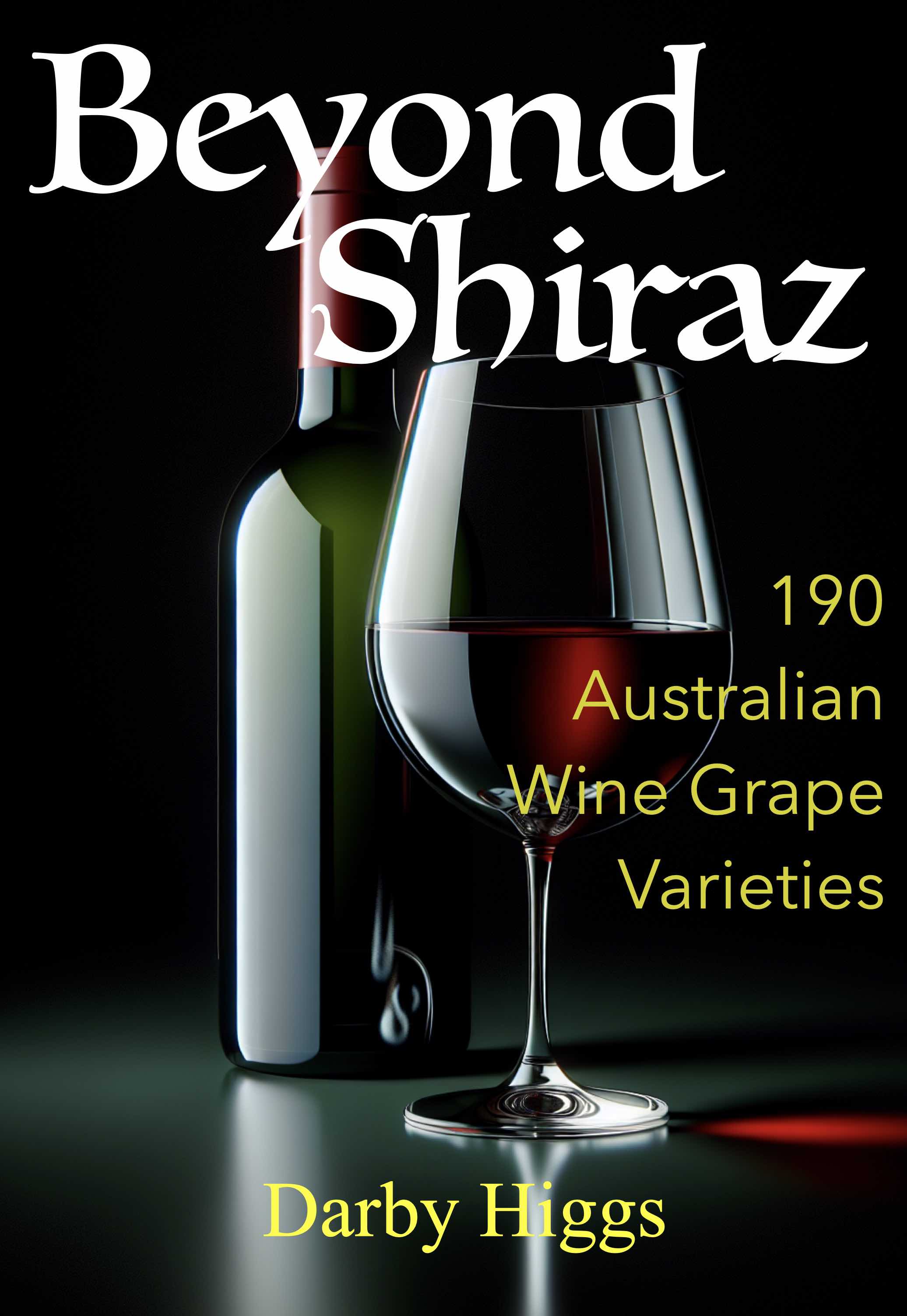Beyond Shiraz Book
Paperback and E-book
Now Available
Savagnin white wine variety
An accidental success story
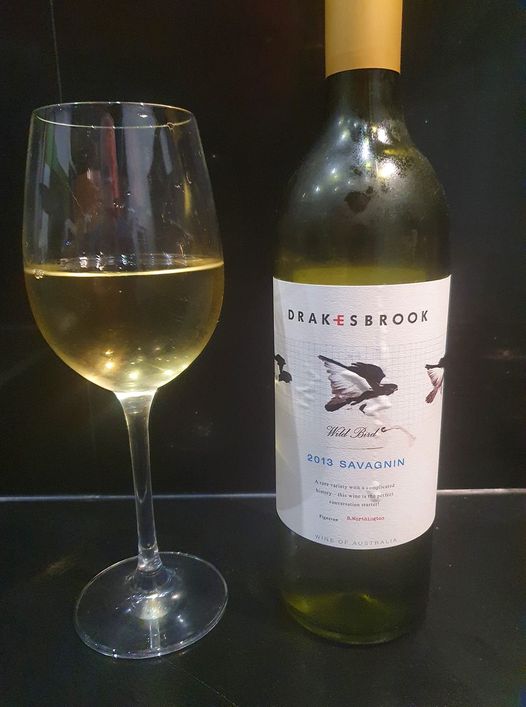 Darkesbrook Savagnin
Darkesbrook SavagninThe big Boo Boo
Until very recently Savagnin was not known to be used commercially in Australia. Since 2009 it has been known that the vineyards in Australia which thought they were planting Albarino were in fact planting Savagnin.
The wines are still excellent, it's just that the wine needs to be marketed under a new name.
Apparently propagation material from Spain via France labelled as "Albarino" were in fact "Savagnin". This material was used by vine nurseries to supply all of the vineyards who planted it in the early 2000s. By the end of that decade DNA analysis had revealed the mistake.
Other cases of mistaken Identity
This is not the only time that mistakes have occurred. In the 1990s it was discovered that many vineyards in Chile thought to be Merlot were in fact another Bordeaux variety Carmenere. Many other vineyards were found to be field blends of the two varieties. Carmenere is better suited to the drier conditions and is now a major variety in Chile.
Some Western Australian wineries planted a variety called Carnelian when they thought they had Sangiovese. A few have persisted with the variety, which makes good red and rose wines.
Many or most Australian plantings of Petit Manseng are now believed to be in fact Gros Manseng.
So what is Savagnin?
Savagnin in France
This book, availalbe from Book Depository includes descriptions of the Savagnin variety and Vin Jaune
Savagnin is a very old variety which is believed to have originated somewhere in north east France or in adjacent areas of Germany.
Despite the similarity of names this variety is a distinct variety to Sauvignon Blanc.
There is a substantial number of clones some of which are usually regarded as separate varieties. There are dozens of synonyms, reflecting its age and distribution.
The aromatic Gewurztraminer is a clone of this variety.
The clone that is most commonly grown now is often called Savagnin blanc. It is particularly known for its role for the production of the rather idiosyncratic vin jaune in the Jura Region of Eastern France.
Savagnin in Australia
After the mistake was discovered grape growers and wine makers were faced with a choice, whether to persist with Savagnin or to graft their vines over to something else. Fortunately many had already made a couple of vintages and were impressed enough with the wines to continue with Savagnin.
Australian dry white wines from this variety are often excellent, crisp and light bodied, ideal with appetisers or seafood. They are very similar in style at least to the best Albarino wines from north west Spain.
As the wines can't be labelled as "Albarino". The name Savagnin is similar to Sauvignon and hence causes confusion. Some winemakers use fantasy names, for example Soumah use Saverro, and Dalfarras use Savinno.
- 919 Wines Riverland
- Allinda Yarra Valley
- Amato Vino Margaret River
- Angullong Wines Orange
- Arfion Yarra Valley
- Bago Vineyards Hastings River
- Banrock Station Riverland
- Bay of Shoals Kangaroo Island
- BK Wines Adelaide Hills
- Box Grove Vineyard Nagambie Lakes
- Castagna Vineyard Beechworth
- Centennial Vineyards Southern Highlands
- cf Geelong
- Chalice Bridge Estate Margaret River
- Chalk Hill Winery McLaren Vale
- Chapel Hill McLaren Vale
- Chrismont King Valley
- Cirami Estate Riverland
- Coolangatta Estate Shoalhaven Coast
- Coombe Farm Vineyard Yarra Valley
- Crittenden Estate Mornington Peninsula
- Crooked River Wines Shoalhaven Coast
- Dalfarras Nagambie Lakes
- De Bertolis Rutherglen Estates Rutherglen
- Defialy Macedon Ranges
- Doc Adams McLaren Vale
- Drakesbrook Wines Peel
- Eleven Sons Limestone Coast Zone
- Entropy Gippsland
- Feathertop Alpine Valleys
- First Drop Barossa Valley
- Flowstone Margaret River
- Gemtree Vineyards McLaren Vale
- Gestalt Wines Adelaide Hills
- Glandore Estate Hunter Valley
- Golden Ball Beechworth
- Golding Adelaide Hills
- Gracebrook Vineyards King Valley
- Hand Crafted by Geoff Hardy McLaren Vale
- Head Wines Barossa Valley
- Hollick Wines Coonawarra
- Homestead Estate Alpine Valleys
- Irvine Eden Valley
- Kangarilla Road McLaren Vale
- Kellivale Geographe
- La Villa Northern Tasmania
- Landhaus Estate Adelaide Hills
- Langmeil Barossa Valley
- Mad Dog Wines Barossa Valley
- Mansfield Wines Mudgee
- Mimosa South Coast Zone
- Minko Southern Fleurieu
- Montalto Vineyards Mornington Peninsula
- Mosquito Hill Wines Southern Fleurieu
- Omersown Wines Riverland
- Pandemonium Estate Swan Valley
- Parri Estate Southern Fleurieu
- Patritti Wines McLaren Vale
- Peel Estate Peel
- Pikes Clare Valley
- Pindarie Wines Barossa Valley
- Quarry Hill Wines Canberra
- Ricca Terra Riverland
- Rileys of Eden Valley Eden Valley
- Rob Dolan Wines Yarra Valley
- Rochford Wines Yarra Valley
- Rusticana Langhorne Creek
- Rusty Fig Wines South Coast Zone
- Saltram Barossa Valley
- Sassafras Canberra
- Soumah Yarra Valley
- Stockman's Ridge Orange
- Symphonia King Valley
- The Other Wine Co Adelaide Hills
- Thumbprint Wines Mudgee
- Tscharke Barossa Valley
- Tuck's Ridge Mornington Peninsula
- Windsong Wines Langhorne Creek
- Wine by Sam Strathbogie Ranges
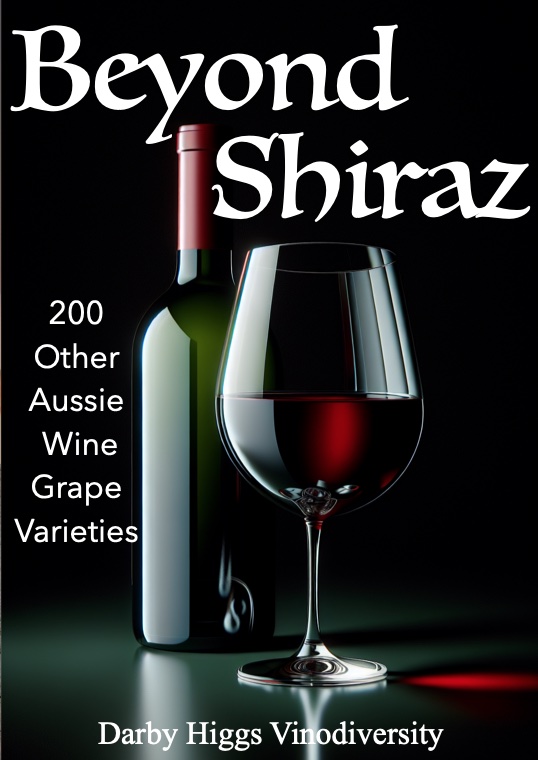
Savagnin is one of almost 200 which are featured in the forthcoming book Beyond Shiraz.
Learn More about Grape varieties
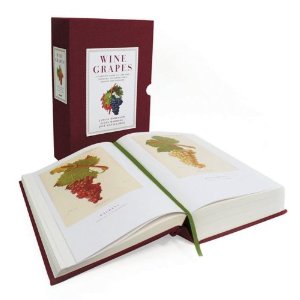
Wine Grapes by Jancis Robinson, Julia Harding and José Vouillamoz
- A physical copy from Vinodiversity's recommended online bookseller
- An iBooks copy for your iPad or iPhone
- A Kindle edition for Kindles and other devices, including Mac and PC desktops and laptops.

Subscribers to Vinodiversity Community get invites to Darby's Special Taste and Talk Sessions.
My new Book
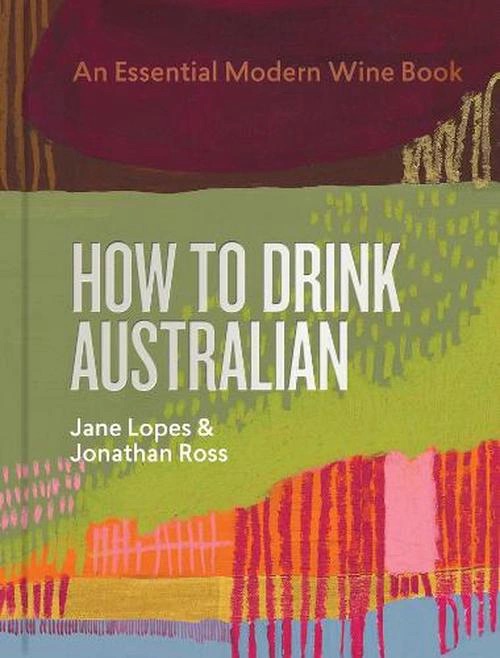
Our Site Sponsors
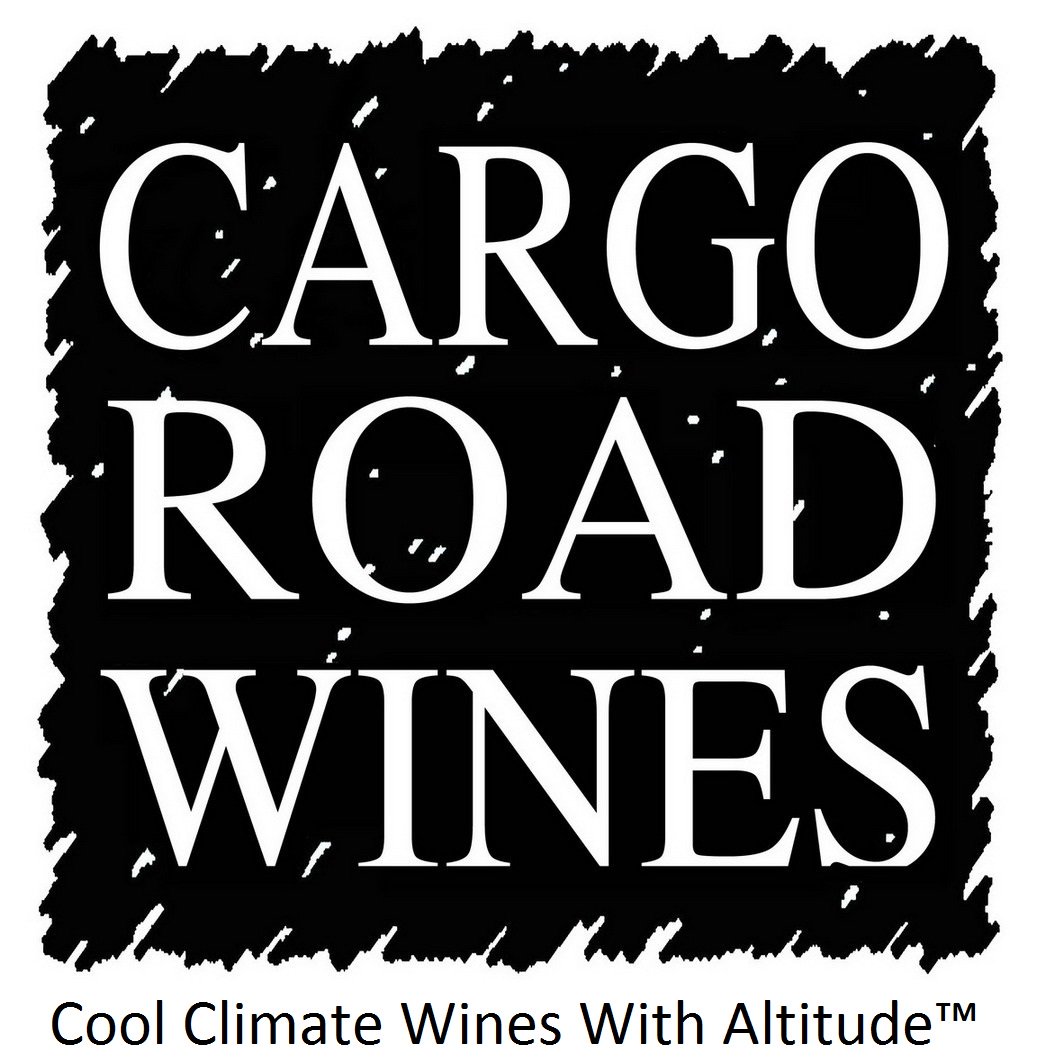 Cargo Road Wines in the Orange NSW region is a Site Sponsor of Vinodiversity
Cargo Road Wines in the Orange NSW region is a Site Sponsor of Vinodiversity
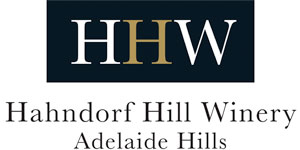 Hahndorf Hill Winery in the Adelaide Hills is a Site Sponsor of Vinodiversity
Hahndorf Hill Winery in the Adelaide Hills is a Site Sponsor of Vinodiversity
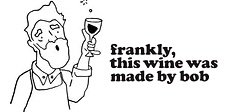 Frankly This Wine is made by Bob
Frankly This Wine is made by Bob
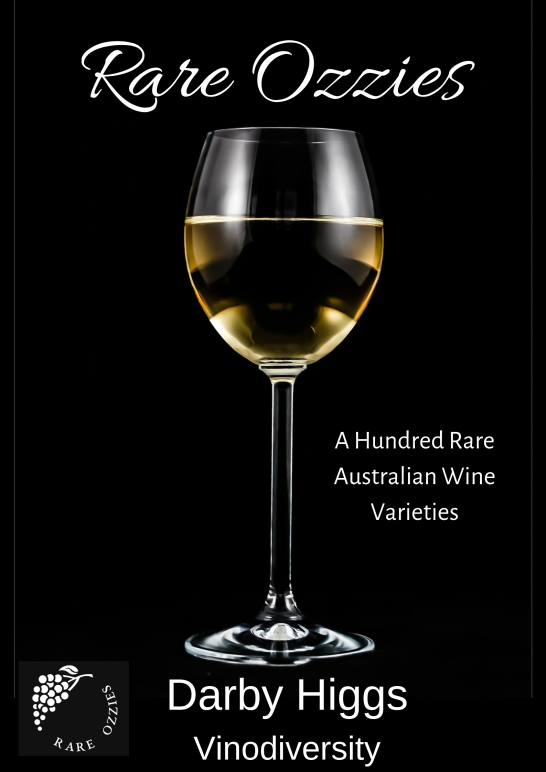 Order this book about Rare Aussie wines
Order this book about Rare Aussie wines
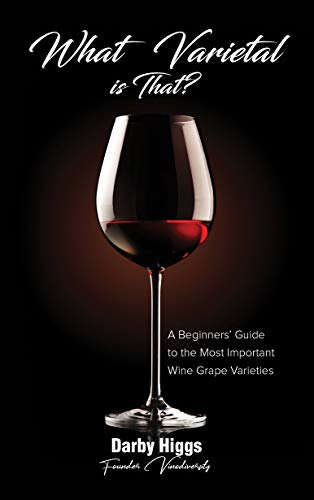 This book describes the most important wines globally
This book describes the most important wines globally
 Savina Road in the Granite Belt Region is a Site Sponsor of Vinodiversity
Savina Road in the Granite Belt Region is a Site Sponsor of Vinodiversity
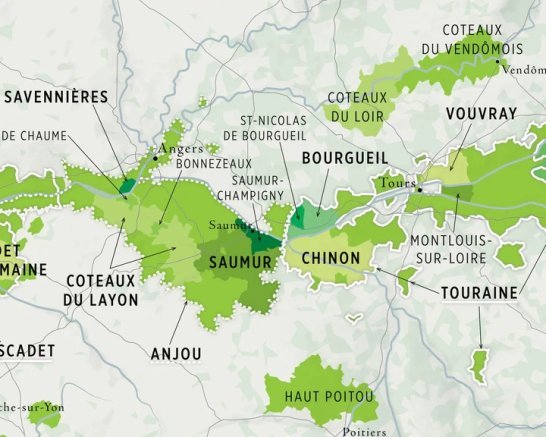 Detail of the new map of France. Italy and Spain also available
Detail of the new map of France. Italy and Spain also available
Become a Site sponsor
You can use this space to promote your winery or wine based business.
See this page for details
Contact Darby for details.
Tweets by @vinodiversity